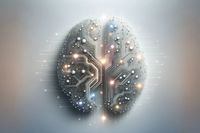AI GONE WILD — Scientists aghast at bizarre AI rat with huge genitals in peer-reviewed article
Scientists express shock and concern over AI-generated figures in a recently published peer-reviewed article.

AI-generated figures cause controversy
Scientists and researchers were stunned when AI-generated figures from a peer-reviewed article began circulating on social media. The figures were deemed uninterpretable, containing gibberish text and one including an image of a rat with bizarrely large genitals. It is still unclear how these images went through the peer-review process.
The publisher of the article, Frontiers, has posted an 'expression of concern' and is currently investigating the matter. The article, titled 'Cellular functions of spermatogonial stem cells in relation to JAK/STAT signaling pathway,' was published online in the journal Frontiers in Cell and Developmental Biology. Frontiers has not yet commented on the issue.
Controversial figures and their implications
The first AI-generated figure in the article, featuring the rat, raised eyebrows and drew immediate attention. The image was clearly flawed, featuring labels such as 'dissilced', 'Stemm cells', 'iollotte sserotgomar', and 'dck'. This raised questions about how such an image could pass through the peer-review process.
Another figure in the article, intended to be a diagram of a complex signaling pathway, was equally mangled and confusing. It was described as resembling 'how to make a donut with colorful sprinkles'. Figure 3 presented a collage of small circular images that were densely annotated with gibberish. These figures highlight the growing issue of low-quality research being published, especially with the potential involvement of AI.
Concerns about AI-generated text
Some scientists raised doubts about whether the text in the article was also AI-generated. While AI detection software suggested it might be, the reliability of such software has been questioned in the past.
The publication of these AI-generated figures raises broader concerns about the trustworthiness of scientific research. Researchers worry that the increasing use of AI could lead to a decrease in reliability and quality. Research journals have recently implemented new authorship guidelines for AI-generated text, but there are still gaps that need to be addressed.



